Best Road Trips in the USA: Florida
Visit the Sunshine State for a family-friendly adventure.
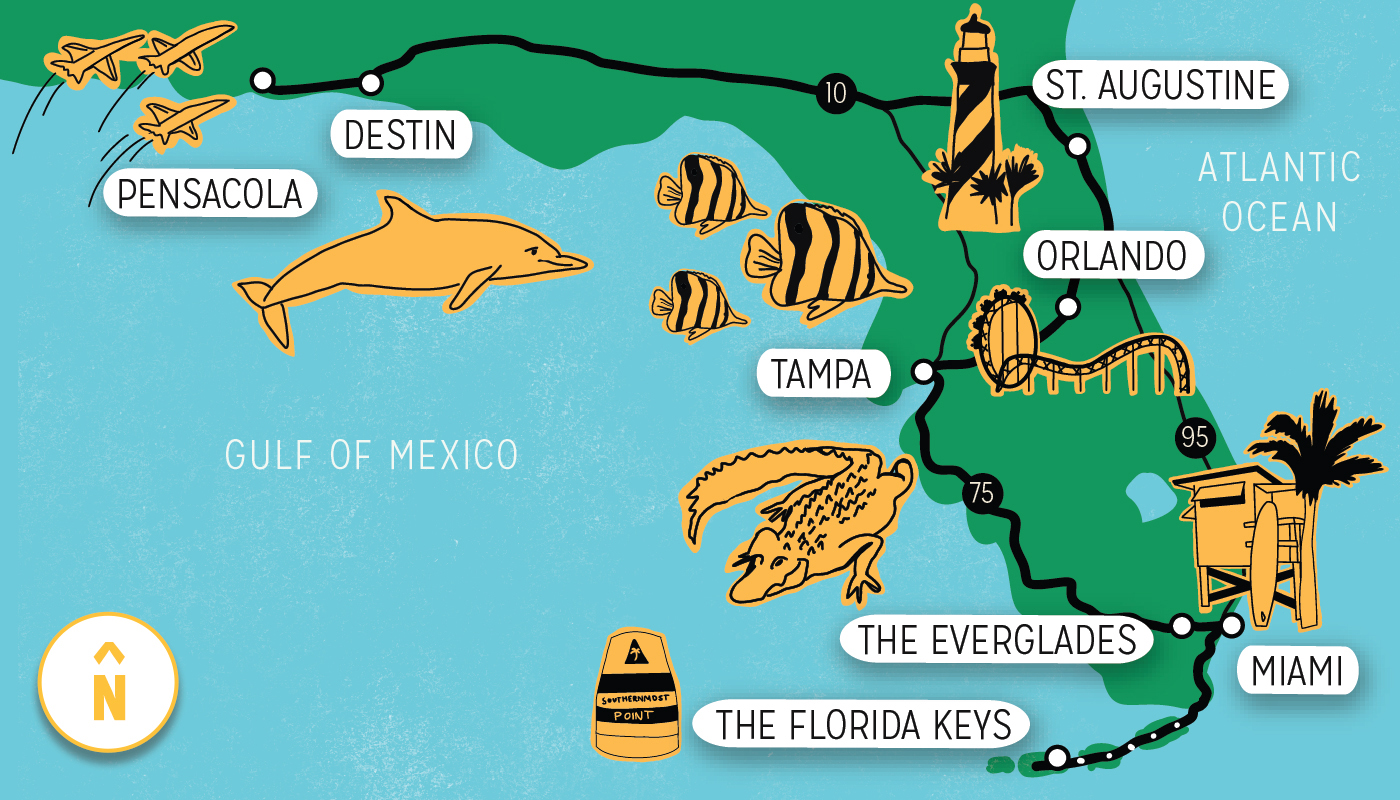 This map is not to scale and is not intended for use in navigation.
©Kelsey Davis, i2iart.com
This map is not to scale and is not intended for use in navigation.
©Kelsey Davis, i2iart.com
Pack your bags and hit the road for Florida, home of the nation’s oldest city, 30-foot sand dunes, world-class amusement parks and six-toed cats. This epic journey takes us from Pensacola in the Florida panhandle to the southernmost tip of the continental U.S., Key West. So, gas up or charge up your car and pack your sunscreen, because we have nearly 900 miles to cover as we explore a peninsula unlike any other.
 iStock
iStock
Pensacola
The state’s westernmost panhandle city (just 13 miles from the Alabama state line) is rich with history. Pensacola is the site of the oldest European settlement in America and is sometimes called the City of Five Flags—referring to the five entities that controlled the area at various times (Spain, France, Great Britain, the Confederacy and the U.S.).
Pensacola also has military roots—it’s the home of the sprawling Naval Air Station Pensacola. Referred to as The Cradle of Naval Aviation, NAS Pensacola is home to the famous U.S. Navy Flight Demonstration Squadron, better known as the Blue Angels. In fact, if you visit the National Naval Aviation Museum (NNAM) on select days, you can catch the Blue Angels practicing their daredevil aerial formations, where certain maneuvers put the jets’ wingtips just 18 inches apart.
The NNAM itself is worth the visit, as it showcases some 4,000 artifacts and more than 150 restored aircraft representing Navy, Marine Corps and Coast Guard aviation. Some of the highlights of this massive museum are the flight simulators, artifacts that include the Skylab Command Module that orbited Earth from 1973 to 1979 and the actual NC-4 flying boat that crossed the Atlantic on a multi-stop trip in 1919.
Just down the road from the NNAM is the Pensacola Lighthouse and Maritime Museum, another venue showcasing aspects of Pensacola’s storied past. The lighthouse was built in 1859 and still functions today as a navigation aid to the U.S. Coast Guard. Climb its 177 steps to see one of the most beautiful views of the coastline.
From the top of the lighthouse, you can also see our next stop: Fort Pickens, part of the Gulf Islands National Seashore. The fort was built to defend Pensacola Bay and the Navy yard. You can see what remains of the Civil War-era fort and check out the Fort Pickens Discovery Center, where you can watch a film about the park.
Destin
Head just 48 miles east, and you’ll reach Destin. A fixture on top 10 lists of favorite U.S. destinations, it’s also home to one of the most popular beaches in the East.
Speaking of beaches, your first stop in Destin should include getting some sand between your toes. Some of the most popular spots include Crystal Beach, James Lee Park and Norriego Point, where you can experience the crystal-clear waters of the Emerald Coast, as the area is called. These sugar-sand shores attract 4.5 million visitors annually, so be sure to carve out a few days of beach time.
Henderson Beach State Park offers 6,000 feet of pristine shoreline for guests to enjoy. The park boasts 30-foot sand dunes to explore, plus fishing, nature trails and 60 beach-connected campsites. If you’re looking for an adrenaline rush, the Destin Harbor Boardwalk should be your next stop.
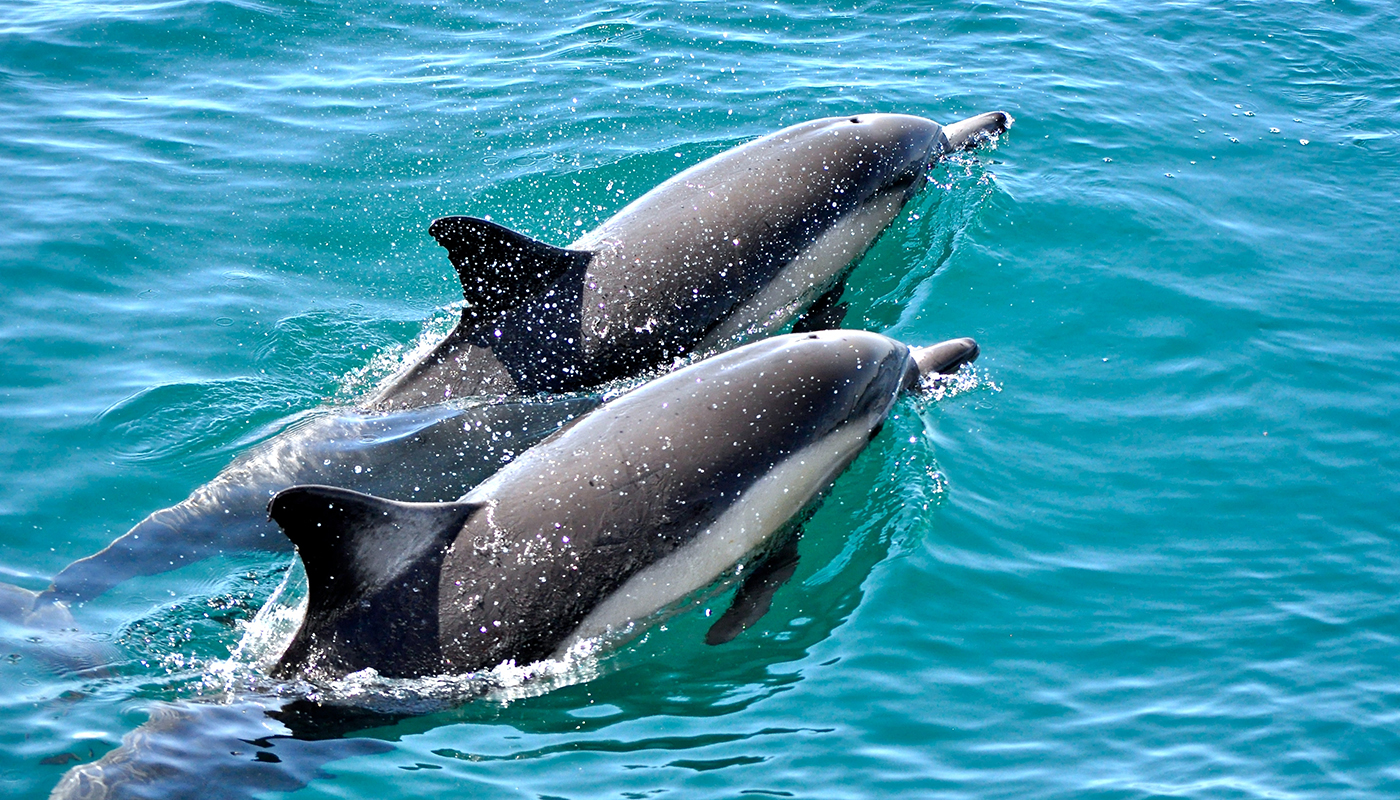 iStock
iStock
This water sports hub offers parasailing, snorkeling, boating and fishing. If a dolphin encounter is on your bucket list, dolphin cruises are available, too. Ready for some fun away from the beach? Head to The Village of Baytowne Wharf for an array of attractions, including restaurants, shopping and free live music, as well as a playground, carousel, arcade, zip line course and ropes courses.
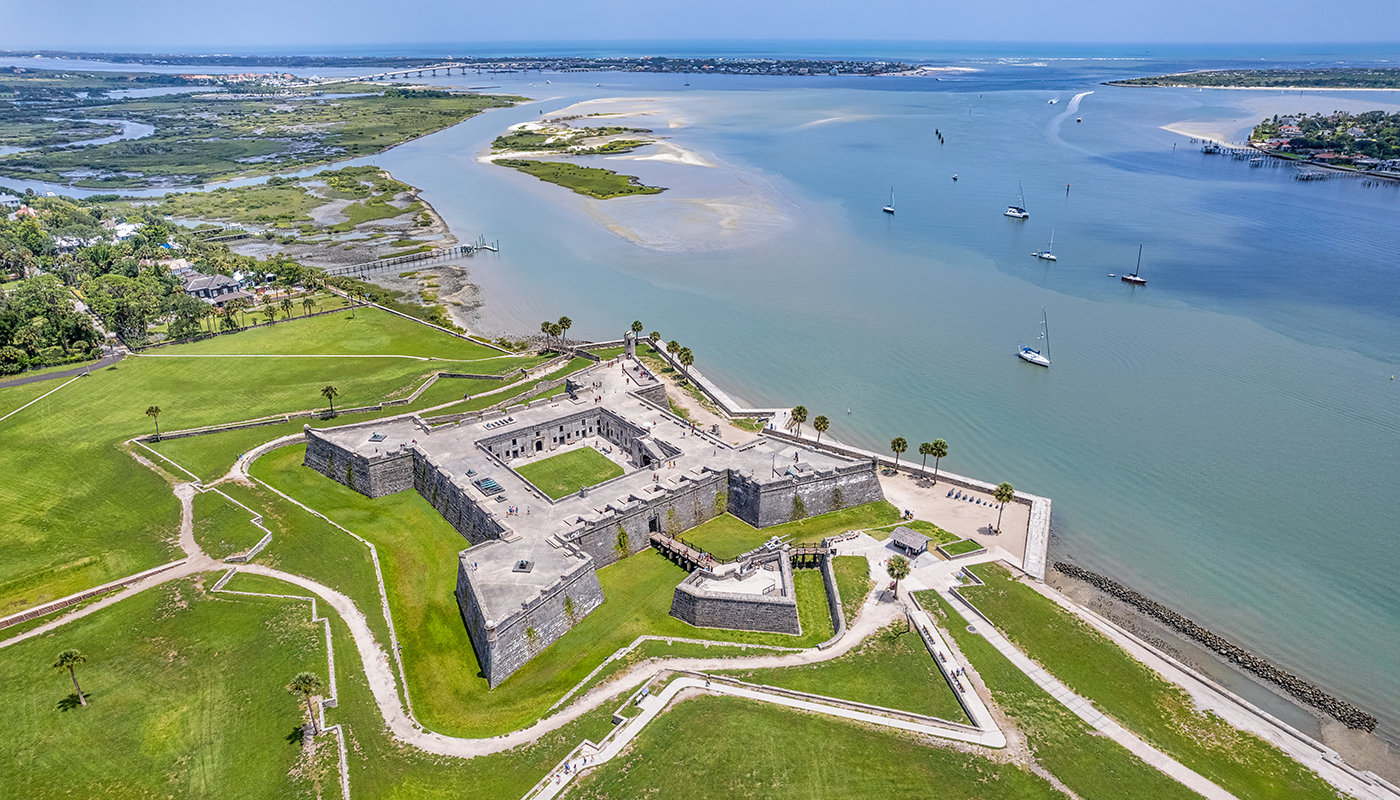 iStock
iStock
St. Augustine
The next leg of the trip is the longest. Head east to St. Augustine, 358 miles (about 5 hours and 20 minutes) away. Established in 1565, making it the oldest city in the United States, St. Augustine is known for the history of its Spanish settlers. Here you can see the Castillo de San Marcos National Monument.
During a visit to this fort, originally built to defend the area and trade routes, you can view the original City Gate, see demonstrations of historic weapons and explore the site at your own pace. You’ll see park rangers dressed in period clothes who can answer questions about what life was like for colonists.
After a morning at the fort, stop by St. George Street in St. Augustine’s Historic District. Here you’ll find a pedestrian street where you can shop, eat and view historic homes. The next stop is the St. Augustine Lighthouse & Maritime Museum, which takes us to the oldest port in the country. Stretch your legs by climbing the 219 steps to the top of the lighthouse, which was first lit in 1874, or let your little ones get their wiggles out at the shipyard playground.
You can also explore displays of historic artifacts and check out Heritage Boatworks, an on-site education program staffed by volunteer boatwrights striving to keep the art and skill of wooden boat building alive.
To enjoy the beauty of nature in and around St. Augustine, head to Anastasia State Park, where you’ll find more than 1,600 acres of pristine beaches, sand dunes and (hopefully) a chance to see the endangered Anastasia Island beach mouse. Outdoor activities abound at this state park: boating, fishing, hiking, canoeing and camping, as well as incredible birdwatching at one of the state’s most important nesting areas.
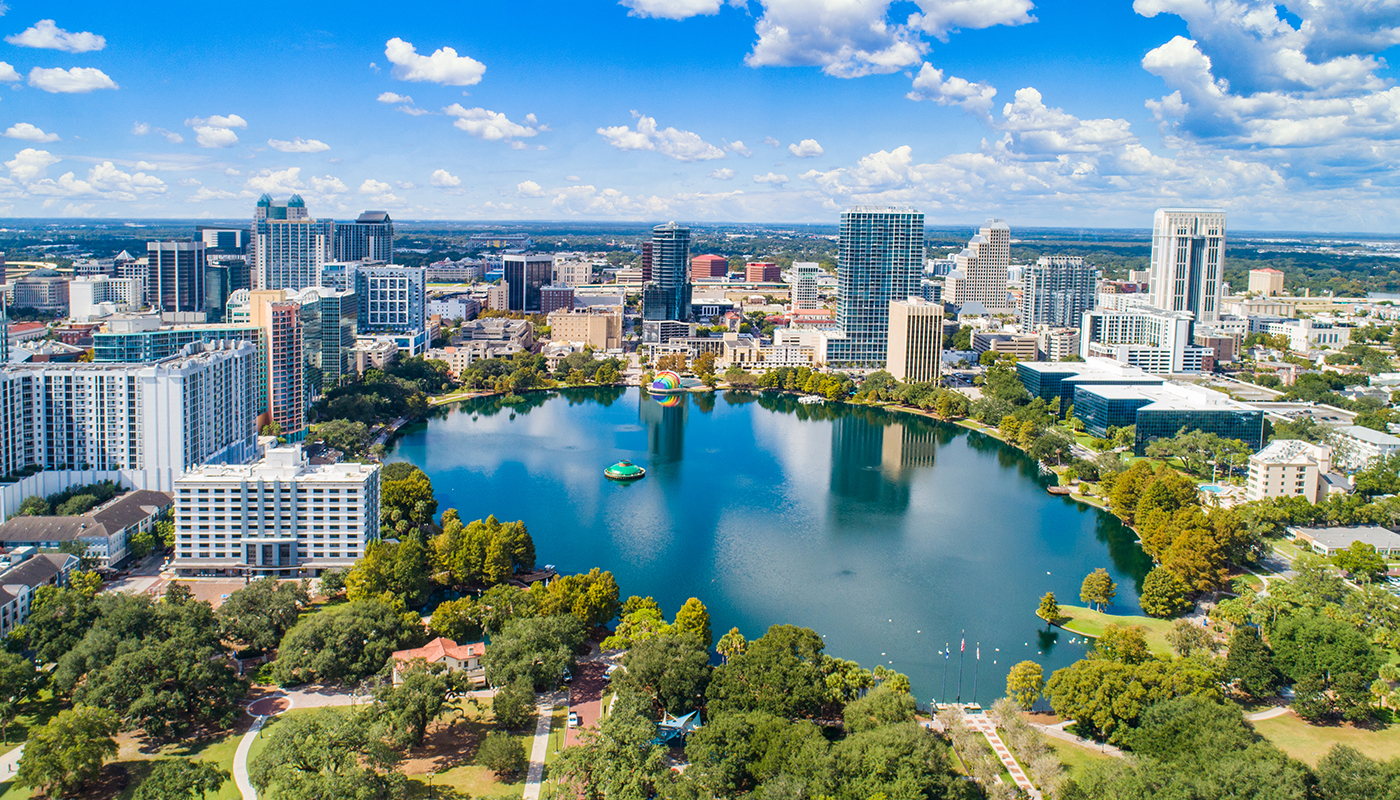 iStock
iStock
Orlando
We’re heading 105 miles south along the coast and into the middle of the state, where we’ll soon cast a shadow on the famous city of Orlando. Called The City Beautiful, Orlando is known for being incredibly family friendly with more than a dozen world-class amusement parks, including Walt Disney World Resort, Universal Orlando Resort and SeaWorld Orlando.
On your way into town, be sure to check out the Central Florida Zoo & Botanical Gardens to explore 23 acres filled with more than 500 animals and unique attractions, such as the opportunity to interact with an endangered greater one-horned rhinoceros. Once in you’re in Orlando, if you’re traveling with children ages 4 and under, be sure to visit Walt Disney World Resort Magic Kingdom Park for character meet-and-greets, Disney’s Animal Kingdom Theme Park for over-the-top animal encounters, and the Peppa Pig Theme Park at the Legoland Florida Resort. SeaWorld Orlando is another favorite stop for younger children, as it has Sesame Street Land, where they can hang out with Elmo, Abby and Big Bird, plus tons of sea animal habitats, shows and encounters.
If you have older kids, you’ve probably heard about Universal’s Islands of Adventure theme park at Universal Orlando Resort. The park includes the magic of The Wizarding World of Harry Potter, The Incredible Hulk Coaster and the Jurassic World VelociCoaster. Walt Disney World Resort’s Hollywood Studios is a hit for the older age group as well, with two immersive Star Wars-themed rides: Millennium Falcon: Smugglers Run and Star Wars: Rise of the Resistance. If you’re planning to explore the parks kid-free, make sure to visit Orlando during the EPCOT International Food & Wine Festival to sample delicious cuisine from six continents.
Looking for fun away from amusement parks? Epic Paddle Adventures offers a unique view of Orlando with clear kayak tours and a variety of route options, including bioluminescence tours that showcase the plankton dinoflagellates that light up the Indian River Lagoon.
Plan a Disney getaway. AAA Members save on multi-day tickets, Disney resorts and more.
Buy Now and Save >>Tampa
Head southwest from Orlando for 84 miles, and you’ll reach Tampa, located on Tampa Bay. In 1880, Vicente Martinez Ybor (Ybor is pronounced E-bore) moved his Cuban cigar operations from Key West to Tampa, spurring a population boom to support the industry. Today, you can still find cigars being made in Ybor City, the site of the old cigar factory that is now a historic neighborhood with shopping, restaurants and nightlife.
If you haven’t had enough thrills on this road trip, stop by Busch Gardens Tampa Bay for unique roller coasters like Cobra’s Curse—the one-of-a-kind roller coaster that gives riders a different experience with each ride, depending on the how the riders’ weight is distributed. The park also features an acrobatic stunt show, an open-air vehicle Serengeti Safari and the Stanley Falls Flume water ride to cool you off after spending time in the Florida sun.
Once you’re done at the amusement park, take a stroll on the Tampa Riverwalk, a 2.5-mile paved walkway where you can enjoy public art displays, restaurants, playgrounds and other attractions, such as The Florida Aquarium and the Glazier Children’s Museum. Our top spot to visit in this area is a foodie’s paradise, the Armature Works’ Heights Public Market, a 22,000-square-foot market with 17 food stalls that create an upscale food court feel. With an array of restaurants offering everything from sushi to coffee and craft cocktails, you’ll be able to find something for even the pickiest of eaters.
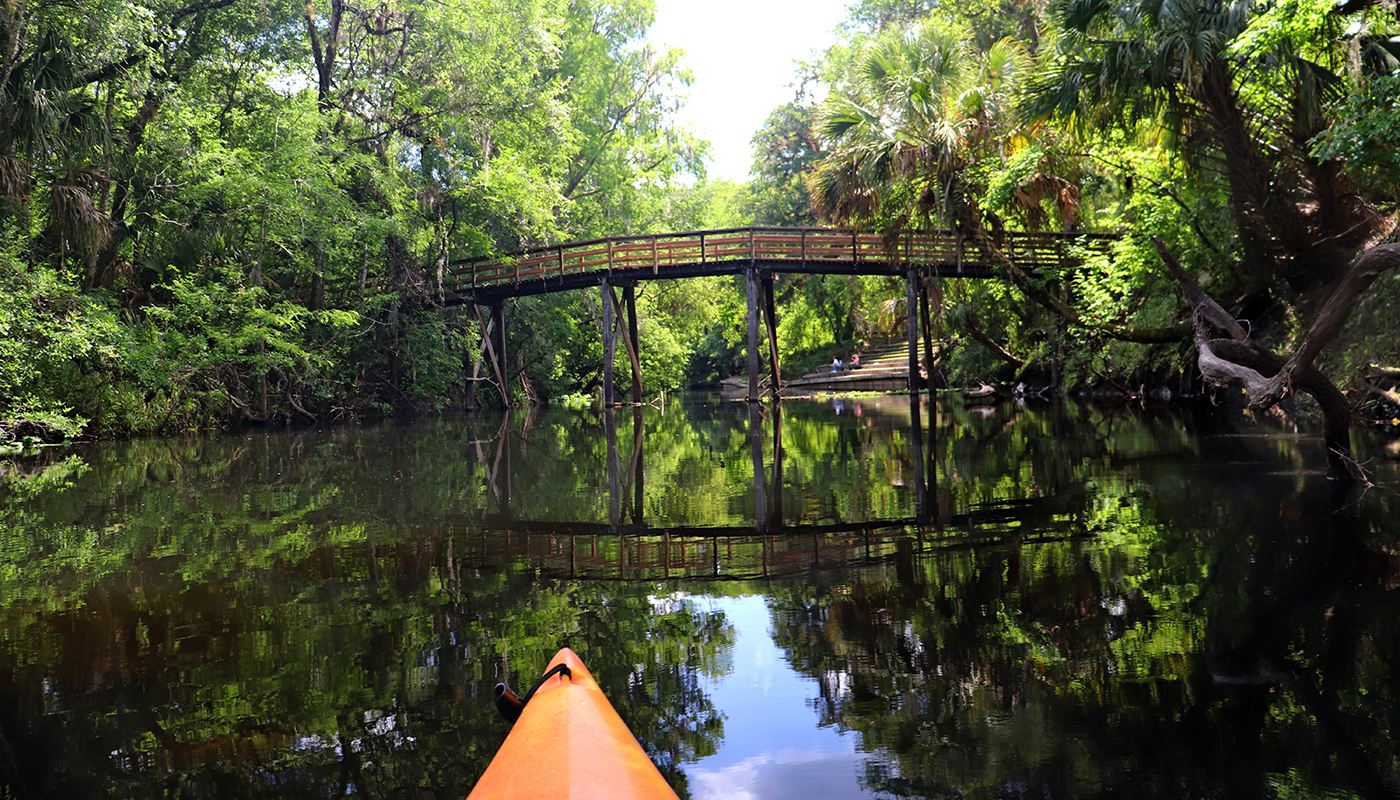 iStock
iStock
Our final stop in the Tampa area is Hillsborough River State Park, an outdoor oasis close to downtown. The park offers Class II rapids for canoeing or kayaking, 7 miles of nature trails and even glamping-style campsites for when you want to camp but also want a comfortable bed and air conditioning.
The Everglades
Talk about a serious cultural shift: We’re driving 207 miles south to Everglades National Park. This 1.5-million-acre wetland preserve is the largest subtropical wilderness in the United States.
Navigating such a huge park can be daunting, so we recommend going through the Homestead Entrance Station and starting your visit at the Ernest F. Coe Visitor Center. Here you’ll find information about the different areas of the park as well as access to some shorter hiking trails. One of these is the Anhinga Trail, an elevated wooden boardwalk just under a mile long that offers beautiful views of the lily and sawgrass marsh. You may see turtles, river otters, alligators and the trail’s namesake bird, the anhinga.
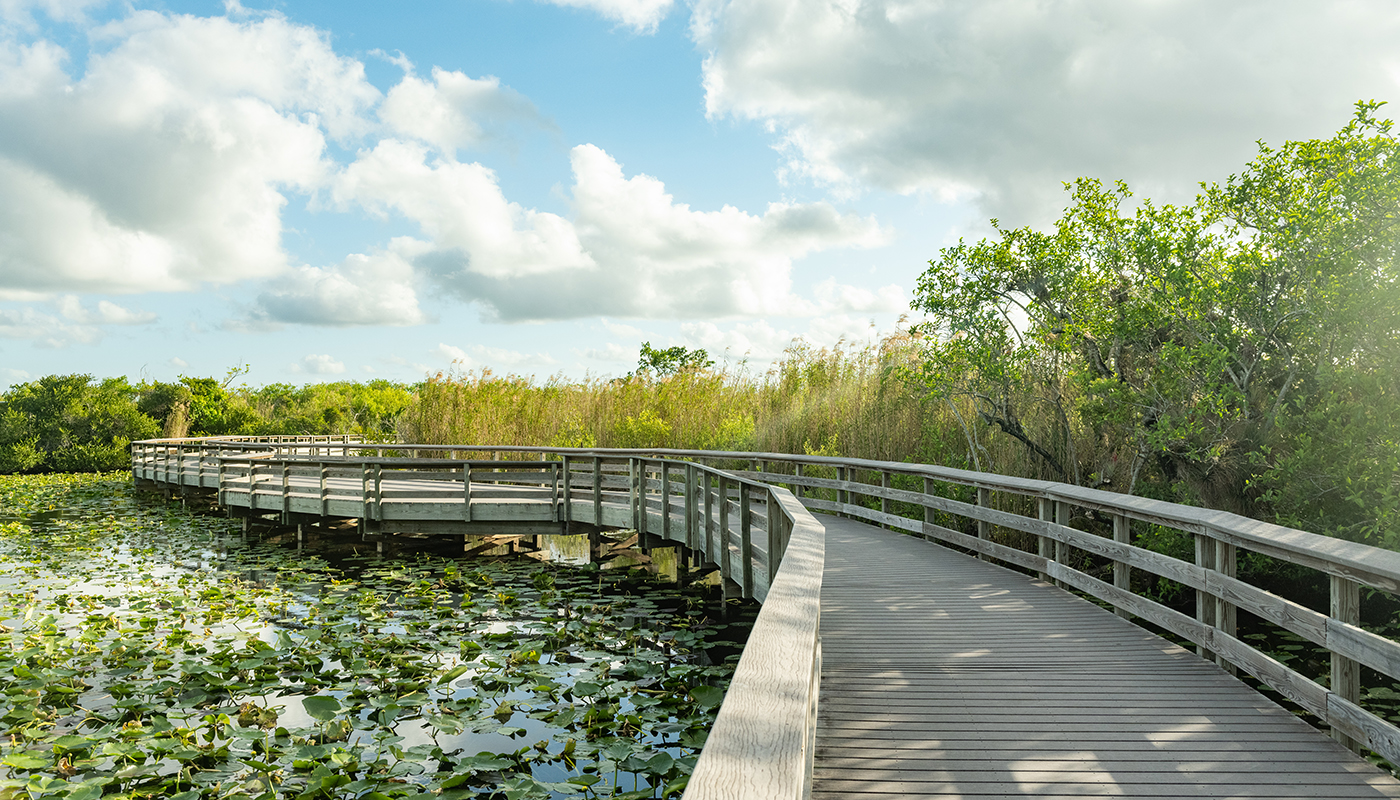 iStock
iStock
After you walk the trail, head to the Guy Bradley Visitor Center (formerly known as the Flamingo Visitor Center), which serves up quintessential views of the Everglades in Florida Bay. This area is also home to the Flamingo Marina, which offers boat rentals and tours. For a unique experience, rent one of the houseboats in the marina as a floating cottage for the night. Each 42-foot houseboat sleeps six and has basic amenities. This is the southernmost point of the park, so this area offers brilliant sunset views. If you’re looking to experience the Everglades from the water, consider a wilderness trip from the marina for a journey on which you’ll paddle all day and spend the night at waterside campsites.
Planning is essential for trips like this, and you can reserve campsites up to 90 days in advance, you’ll need a park pass, but the unadulterated views of one of world’s most unique ecosystems are worth it.
Miami
It’s only 85 miles from the Guy Bradley Visitor Center in the Everglades to bustling, colorful Miami, but these places are worlds apart. The largest city on our road trip (population 439,000-plus), Miami is known for its strong Latin influence, beautiful beaches, energetic night life and exploding art scene.
A testament to the art scene is Wynwood Walls, a beautiful street art museum in the heart of the Wynwood Arts District. More than 35,000 square feet of walls feature the street art of some 100 artists, giving this area a vibe that perfectly suits Miami’s lively character. Stop by the Wynwood Walls Shop for unique souvenirs, such as art prints and art-inspired apparel.
After a morning downtown, escape to the lush Vizcaya Museum and Gardens for a palate cleanser. This former 32-room estate-turned-museum overlooks Biscayne Bay in the Coconut Grove neighborhood and boasts beautiful Mediterranean-style architecture. The opulent interior is a must-see, but don’t miss the museum’s formal gardens, which are some of the most elaborate in the U.S. Your trip to Miami isn’t complete without a visit to world-famous South Beach. The area’s draw goes beyond the 15-block beach and turquoise waters.
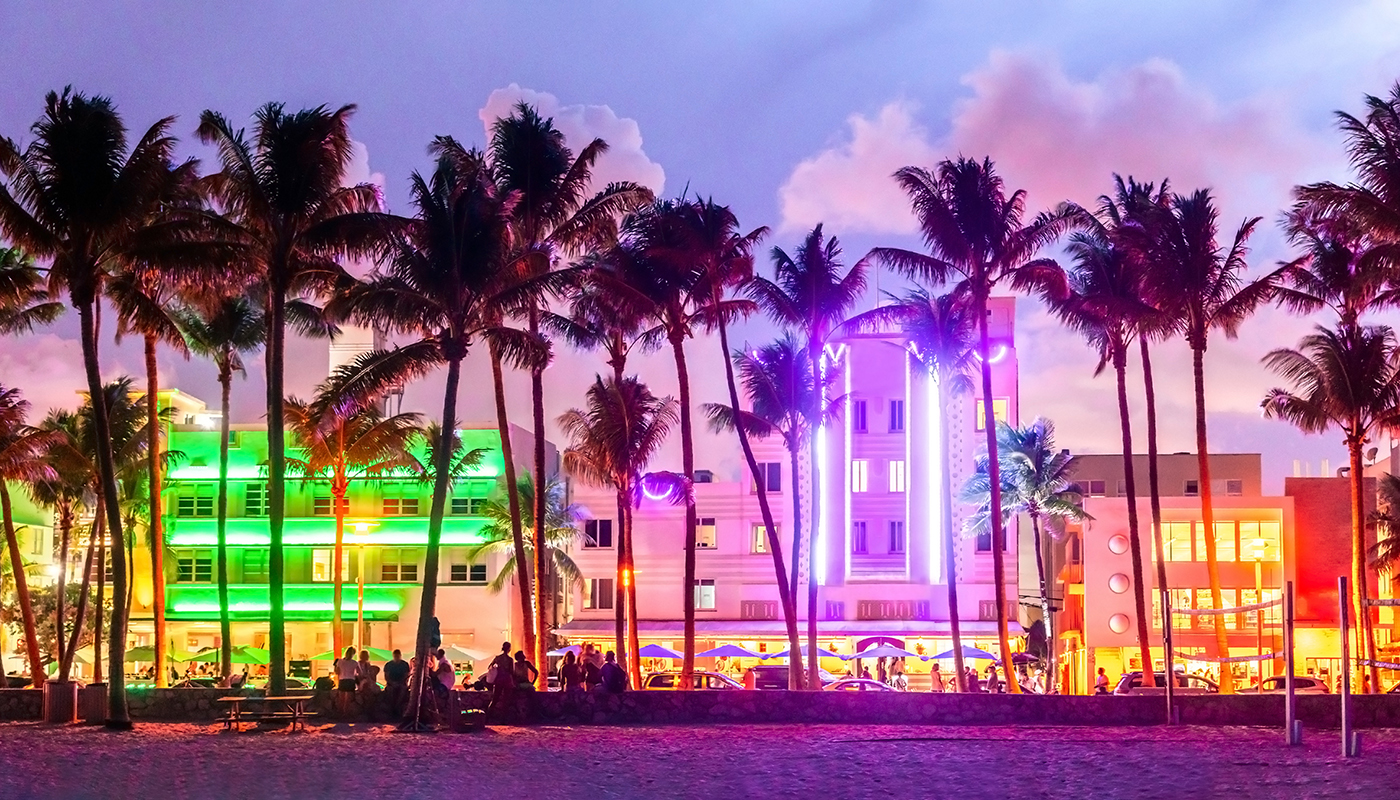 iStock
iStock
South Beach is also known for historic pastel art deco architecture and its glamorous social scene. Ocean Drive is the most famous road in South Beach: You can stroll the seaside road passing the iconic Hotel Breakwater, 74-acre oceanfront Lummus Park, and dozens of high-end restaurants and nightclubs.
The Keys
Wrapping up our Florida traverse, merge onto one of the country’s best-known—and most-loved—stretches of roadway: U.S. Highway 1 heading south to the Florida Keys. This stretch may be the prettiest of the whole trip as you make your way along the Overseas Highway, where you’ll enjoy a trifecta of stunning views: the Atlantic Ocean, Florida Bay and the Gulf of Mexico.
Our first stop in the Keys, compact Key Largo, is just 60 miles from downtown Miami. It claims the title of dive capital of the world—and for good reason. Key Largo is home both to the third-largest artificial reef in the world, the 510-foot former Navy vessel USS Spiegel Grove, as well as to John Pennekamp Coral Reef State Park. Both attractions are perfect for scuba diving and spotting more than 250 species of tropical fish as well as lobsters, sea cucumbers and majestic manatees.
Next on the Keys chain is the village of Islamorada, made up of six islands: Plantation Key, Windley Key, Upper Matecumbe Key, Lower Matecumbe Key, Indian Key and Lignumvitae Key. Just 6.7 square miles, Islamorada occupies a prime spot between the Atlantic and the Gulf that attracts migrating big-game fish species, earning it the moniker of Sportfishing Capital of the World.
If you’re looking for a one-of-a-kind experience in Islamorada, slide into a kayak and paddle a half-mile offshore to Indian Key Historic State Park. What you’ll find there is worth the effort: a deserted 11-acre island where you can fish, snorkel, swim and view the ruins of an 1800s town that was built on the (ship) wrecking industry.
Continue south from Islamorada, and you’ll reach Marathon, a city on the Middle Keys of the island chain. This 10-mile-long community is known for being family friendly, with several beachside resorts that are perfect for multigenerational vacations. As you leave Marathon, you’ll hop on the world-famous Seven Mile Bridge, which connects the Middle Keys to the Lower Keys.
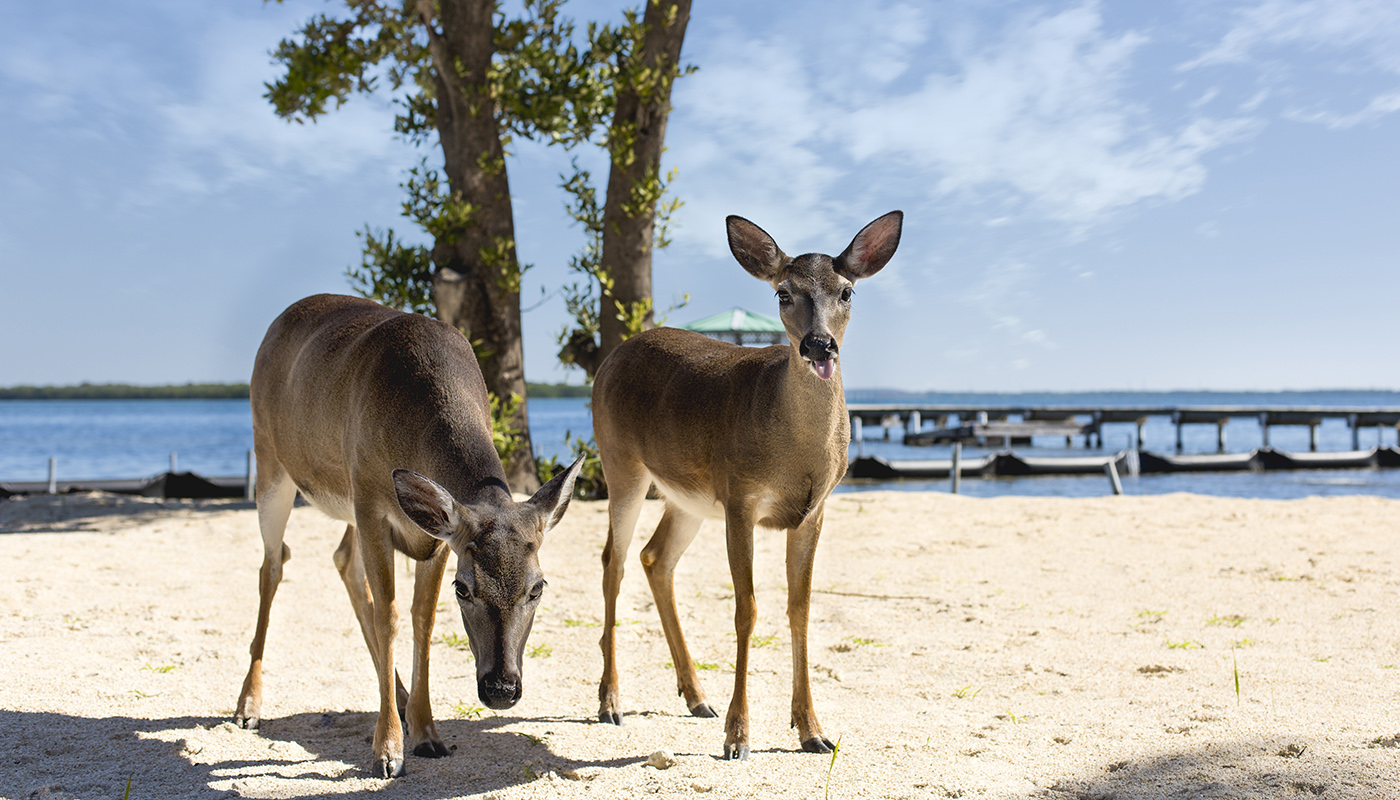 John Duarte/Getty Images
John Duarte/Getty Images
At the end of the bridge, you’ll find Big Pine Key, known for the national wildlife refuge where visitors can spot the endangered Key deer. At this park, you’ll also find the Blue Hole, an abandoned rock quarry now inhabited by alligators, osprey, fish and turtles.
Our final stop on our epic Sunshine State journey is Key West, the southernmost point in the continental United States. Key West has several historically significant sites, including the Hemmingway Home and Museum, the residence of acclaimed American novelist Ernest Hemmingway and his six-toed cats (their descendants still have the run of the property today). For additional interesting history, visit the Harry S. Truman Little White House, the functioning winter White House of President Truman from 1945 to 1952. It sits on the southwest end of Key West and is Florida’s only presidential museum.
Traveling to Florida? AAA saves you time and money.
Now is the time to plan your own road trip or memorable vacation to Florida with AAA. With AAA Member discounts, you can plan a getaway your family will talk about for years. Save up to 10% on stays, earn hotel loyalty points, and get free perks like breakfast and parking with AAA Diamond designated hotel and resort properties. You can even get exclusive discounts on fuel, dining and entertainment. Make more of every road trip—and spend less—with AAA.